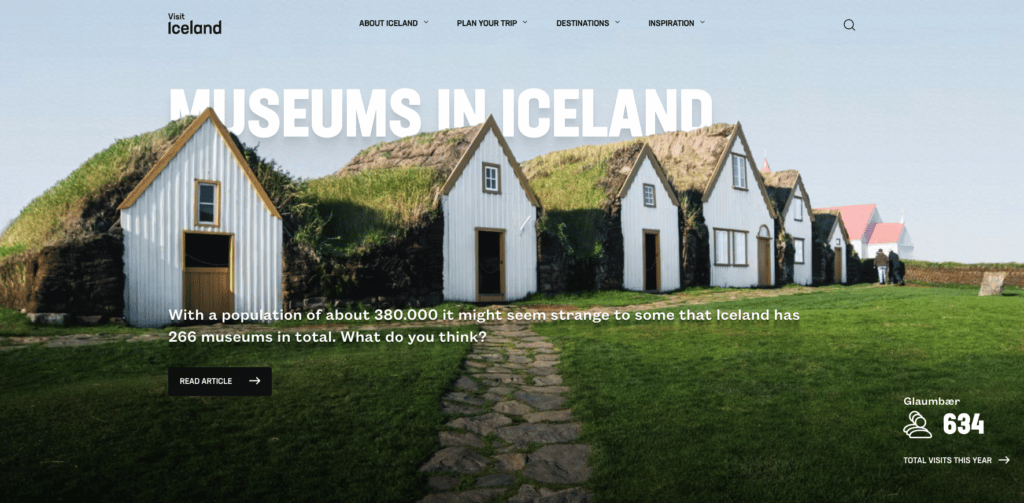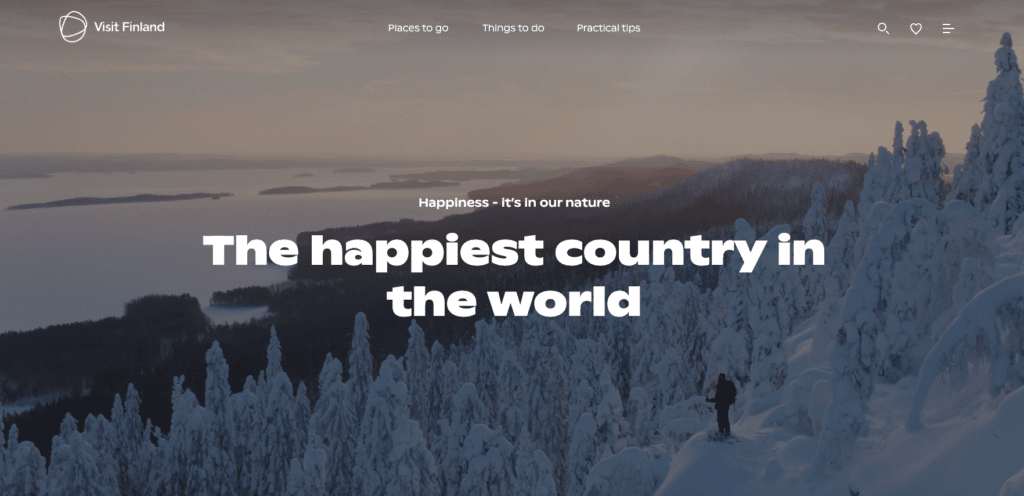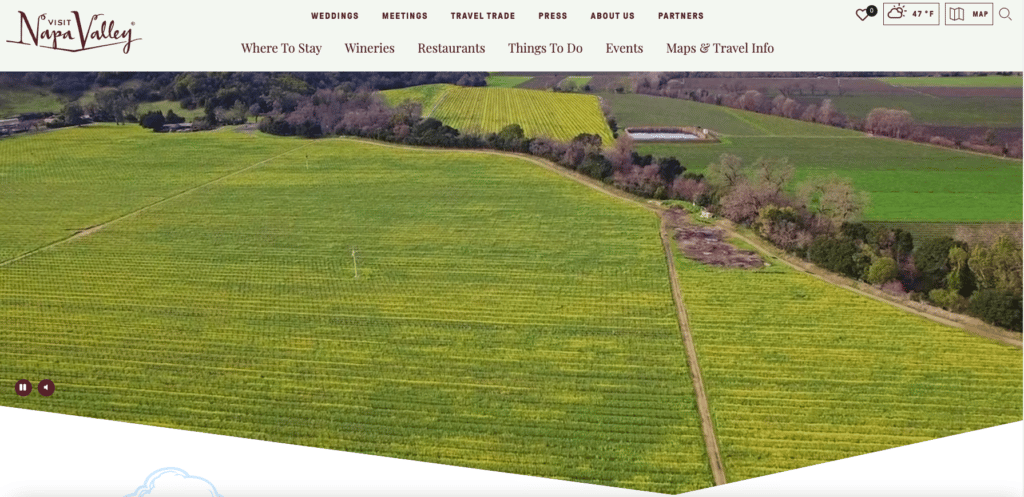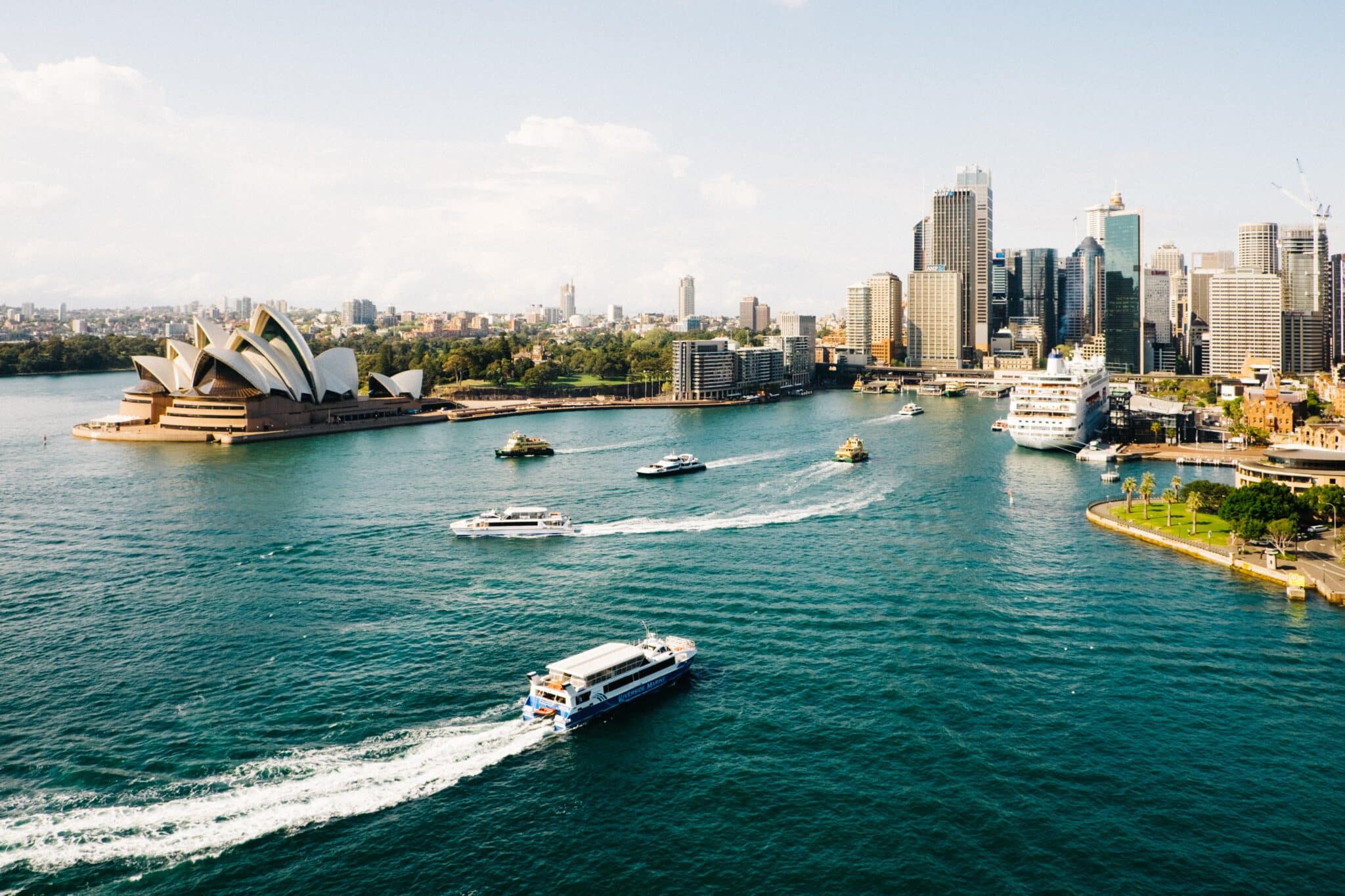Destination marketing is a must for anyone looking to monetize the influx of people visiting a certain area. Governments, airlines, travel agents and more can benefit from utilizing destination marketing in order to raise awareness and increase bookings. In addition, entertainment venues, tourist attractions and operators of hotels/resorts will also be able to maximize their profits by promoting themselves through destination marketing strategies. Continue reading to learn more about tactics that could help increase your visitors!
Table of contents
- What is Destination Marketing?
- Why is Destination Marketing Important?
- Who is Responsible for Destination Marketing?
- 15 Destination Marketing Strategies to Attract More Visitors
- 1. Define the Unique Selling Points
- 2. Define Target Audience & Market
- 3. Utilize Data for Analytics
- 4. Brand Your Destination
- 5. Involve All Stakeholders
- 6. Create An Amazing Destination Website
- 7. Search Engine Optimization
- 8. Experience Marketing
- 9. Video and Virtual Reality Marketing
- 10. Have a Social Media Strategy
- 11. Work With Influencers
- 12. Promote Your Destination On Travel Websites
- 13. Online Advertising Strategies
- 14. Other Promotional Strategies
- 15. Start Blogging!
What is Destination Marketing?
Destination marketing involves strategically promoting a place — be it a small town or city, an entire country, or anything in between — to those who may not have considered visiting there before. If done correctly and strategically, this type of advertising helps to increase the number of visitors.
Destination marketing is intended to make a location or destination stand out amongst its competitors, thus encouraging more people to visit there and helping the local travel industry. It also has the purpose of making others aware of the destination with hopes for an increase in demand and reputation growth.

Why is Destination Marketing Important?
To successfully draw in tourists, it is important to emphasize the advantages of a particular destination. This holds true especially when two destinations are competing for the same travelers. Which is why it’s important to highlight your area’s unique features to help you stand out.
Any destination marketing should emphasize the unique components of your locale to make it stand out from other travel options. When done correctly, this will result in a tremendous benefit for all industry professionals linked to tourism within that region, including hotels and airlines. Ultimately, successful destination marketing can help draw more tourists who are eager to sample what you have to offer!
Who is Responsible for Destination Marketing?
DMOs (Destination Marketing Organizations) or tourist boards are responsible for the marketing of their designated areas; they strive to stimulate travelers’ interest in the city through varied promotion strategies. DMOs speak on behalf of the community and act as its ambassadors, publicizing it to potential visitors from all over.
A Destination Marketing Organization (DMO) plays an integral role by connecting the visitor to their destination. Involving hotels, attractions, local businesses and more – DMOs not only promote visitations but also provide key travel information for guests. Funding typically comes from the Hotel Occupancy Tax.
15 Destination Marketing Strategies to Attract More Visitors
Destination marketing organizations can utilize a range of strategies to raise awareness and draw more people to the area. Check out this detailed overview of 15 approaches that will help get you impressive outcomes!
1. Define the Unique Selling Points
With destination marketing, one of the most important things to do is to identify what things make your location stand out. This could be anything from unique attractions or experiences to remarkable natural topography like mountains or beaches. By taking the time to distinguish these components, you’ll ensure visitors have an unforgettable experience at your destination!
Or, perhaps, your destination has a captivating history, or noteworthy landmarks. It could be that its culture is its selling point and people would love to travel just for that experience – from going to local art galleries and museums to traditional festivals! Put yourself in their shoes – what special aspects make this place stand out? Aim to pinpoint as many unique appealing features as you can.
2. Define Target Audience & Market
To maximize your destination marketing efforts, it is important to identify and understand the needs of your various target audiences. Consider who may be drawn to this location and why they would choose yours over others. You might find that different people have distinct reasons for visiting – so don’t forget to segment them into separate categories in order to tailor campaigns more effectively!
Your destination may attract young adventure seeking travelers, elderly retirees, or outdoor enthusiasts. It could also be a great destination for people who work from home or students looking to experience a new culture.
Finally, it’s important to understand which traveler is most likely to visit your destination (i.e., your main target). Are they people in your drive market? Families? Solo travelers? Paint a picture of who exactly you are mainly going to target – that is your core group.
3. Utilize Data for Analytics
There are tons of sources out there to gain knowledge on who is visiting your destination. At the very least, you should be utilizing Google Analytics to get demographic information, where they are originating from and where they are going on your site. You can also utilize insights on your social media platforms. Most likely, the demographics of who finds you on Instagram is different than who is finds you via Google.
By gathering data about your existing customers offline, you can discover more information including the average age of visitors, whether your destination attracts a majority of men or women and what modes of transportation they take. With enough analysis on those figures, you will then be able to identify who are the best people to target with marketing campaigns as well as how and which messages would work better for them.
4. Brand Your Destination
Branding is key to making a business easily recognizable and unique. Logos, colors, and design themes, are all integral aspects of creating an effective brand identity that stands out from your competition. With branding you have the power to be noticed by potential customers and show them why your product or service should meet their needs better than anyone else’s!
This also applies when talking about a destination. I would recommend working with an agency and hashing out your logo, color scheme, and potential tagline. All of that will then translate onto your website, social media platforms, digital marketing and printed collateral.
5. Involve All Stakeholders
A large part of destination marketings involves working with your stakeholders. This group might include people from your hotels, museums, restaurants, and attractions as well as city officials or City Council members. They may already be on your board but, not necessarily. This group is key in facilitating engagement and trust from the community.
Collaborate on a Strategic Plan for your destination that encourages potential visitors, stakeholders and partners to support you. Explore how you can persuade these parties to embrace some of the branding from a larger geographical area as well as conduct their own promotional campaigns in order to maximize tourist interest.
6. Create An Amazing Destination Website
With the majority of travelers researching your destination online before booking a trip, an optimized and well designed website is crucial. This is the perfect platform for highlighting unique characteristics and events, collecting email addresses for retargeting, and so much more. By creating an effective website that stands out from competitors, you can easily attract tourists to your destination.
Some key elements for your destination site should include:
- A calendar of events
- Trip ideas
- Types of places to visit (i.e, Museums & Attractions, Restaurants, Parks….etc)
- A downloadable visitors guide
- Email sign up form
- A blog section
- Social Media links
Check out these DMO websites for inspiration:




7. Search Engine Optimization
If you want to stay ahead of the competition, it’s essential that your website ranks high in the SERPs (search engine results pages) when people are looking for what your destination can offer them. Besides a strong and focused local SEO strategy, it’s important that you work towards your brand being the local expert when anyone is searching for your destination.
To properly optimize your website and beat out the competition, you start with keyword research, and create an SEO strategy and craft content that targets those keywords. SEO can also be effective way to promote videos and images and gain some coveted featured snippets spots. Overall SEO is the end game and what will sustain you in the long run, it’s imperative that your SEO game is strong and keeping up with all the latest trends.
8. Experience Marketing
For most tourists, enjoying experiences is the main motivator behind choosing a destination. Therefore, it makes sense to market your destination by highlighting your unique experiences. This is where UGC (User Generate Content) is very impactful. This will not only give potential visitors an insight into what they can expect from visiting these destinations but also help build a connection with visitors and encourage them to share their experiences on social media.
By doing this, you have now turned your visitors into destination ambassadors. Word of mouth promotion is an incredibly effective strategy, as it has a reputation for being more reliable than messages from brands or organizations.
9. Video and Virtual Reality Marketing
Video marketing is pretty much a requirement at this point. Because attention spans are so short, it’s important to create fun and engaging contenting in 60 seconds or less. Video content is something that is easily shared and will get a higher engagement rate. Use this opportunity to show potential visitors how much they can experience.
Virtual reality marketing takes it a step further by giving potential travelers the opportunity to experience elements of the destination from their home. It could be anything from a virtual tour of a hotel, a walk through a state park, or a 360-degree tour of a local museum. With this technology at hand, customers can have access to vivid visualizations that help them imagine themselves in these places before they even book!
10. Have a Social Media Strategy
Social media platforms like Facebook, TikTok, and Instagram are the ideal way to target large groups of people and promote your destination. By utilizing Reels, stories, lead gen campaigns and influencers, the opportunities are endless to boost engagement, raise awareness, and turn your followers into visitors.
I don’t normally say this but, it is also very important that you post high quality photos and videos. That being said, don’t lose your authenticity. But, for destinations (i.e., hotels, restaurants, locations…etc), I always recommend posting high quality photos that are on brand. It’s also important to take advantage of UGC (User Generated Content) and, when appropriate, share that content on your feed as well.
11. Work With Influencers
Oftentimes, people are quick to recognize and reject direct marketing or advertising tactics. However, most people can be connected with indirectly through influencers. To put it simply, influencers consist of those who have built up a dedicated following on various social media outlets such as YouTube, Instagram, TikTok and/or their own website/blog. With their help reaching your intended target audience is made much easier!
By teaming up with influencers, you can spread the word about your destination to a wide range of people and even target niche audiences who are more likely to respond positively. Their followers are usually faithful and put far more trust in the opinion of an influencer rather than those from any organization. This is a great way to market your destination on various platforms!
Unsure of where to begin when it comes to working with influencers? Join Brand Accelerator and check out our live training on March 29th!
12. Promote Your Destination On Travel Websites
To maximize your reach and draw attention to your destination, it is essential to go beyond your website and social media platforms. Utilizing travel websites–whether they are as large as TripAdvisor or local sites that cater towards a specific demographic–is the perfect way to engage potential travelers who may not have pre-existing knowledge of where you’re located.
Travel sites can also help you keep track of reviews – respond to criticism and improve customer feedback.
13. Online Advertising Strategies
The information and data you have gathered about your visitors and your target audience can be used to inform your online advertising. Using this information, you can target search advertising to specific regions, pay for display advertising on the right platforms and promote content on third-party websites your target audience use.
In addition, re-marketing allows you to reach out to people who have previously engaged with your destination website, or your DMO’s social media channels. This gives you the ability to remind people of your destination, knowing that they have already previously shown interest, which can be great for encouraging them to commit to a visit.
14. Other Promotional Strategies
After defining your desired audience, understanding what they seek and where they originate from, you can also identify when the perfect time is to visit. For example, some locations are more desirable in warm summer months while others may attract people who enjoy winter sports or during Christmas holidays. This will help you be able to get ahead of any potential competition when planning trips around these peak times.
To promote your destination, you could partner with a magazine and do a combo of print, email, and social media ads. You could also look into streaming services like Roku or Spotify.
15. Start Blogging!
Blogging is essential when it comes to destination marketing. It not only gives you the the chance to inform, engage and educate your audience about a specific location but it also enables you or your brand to become perceived as an authoritative source. Plus, blogging allows for a much more personal approach that can truly captivate potential visitors and entice them into exploring the destination!
Blogs are also great because you can repurpose them into videos, carousel posts, and more! It can be one piece of content that turns into 5. It also helps in your SEO strategy.

